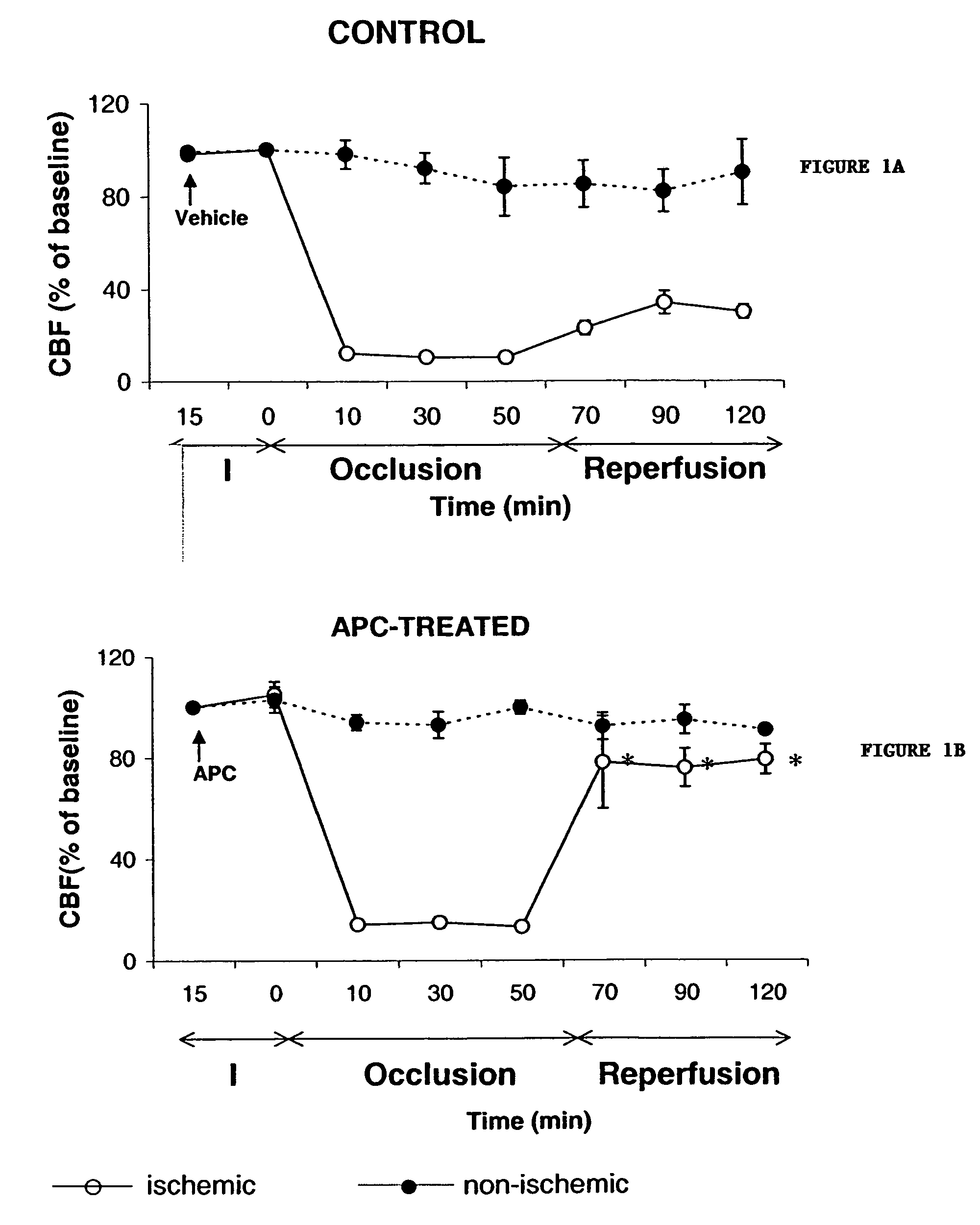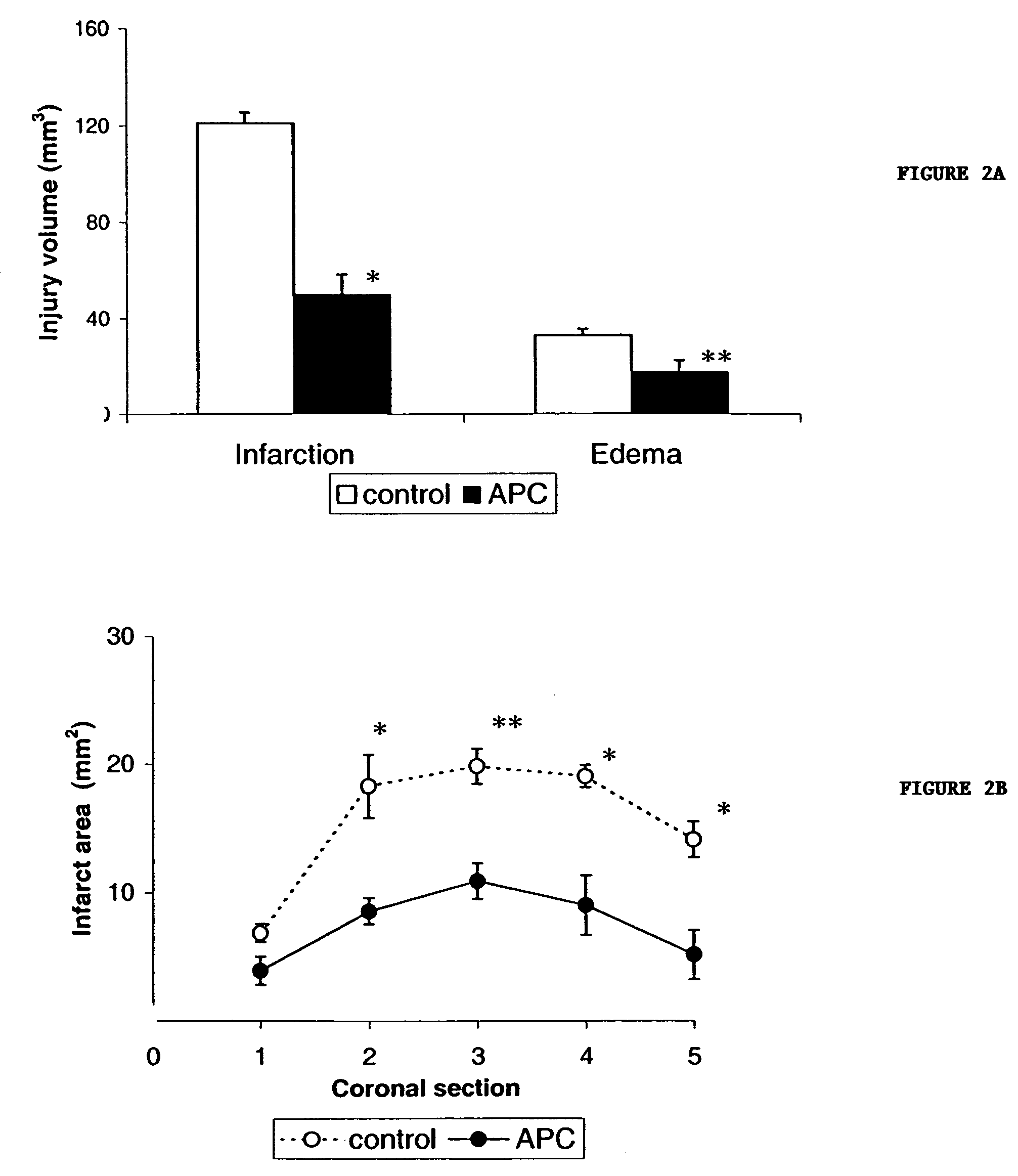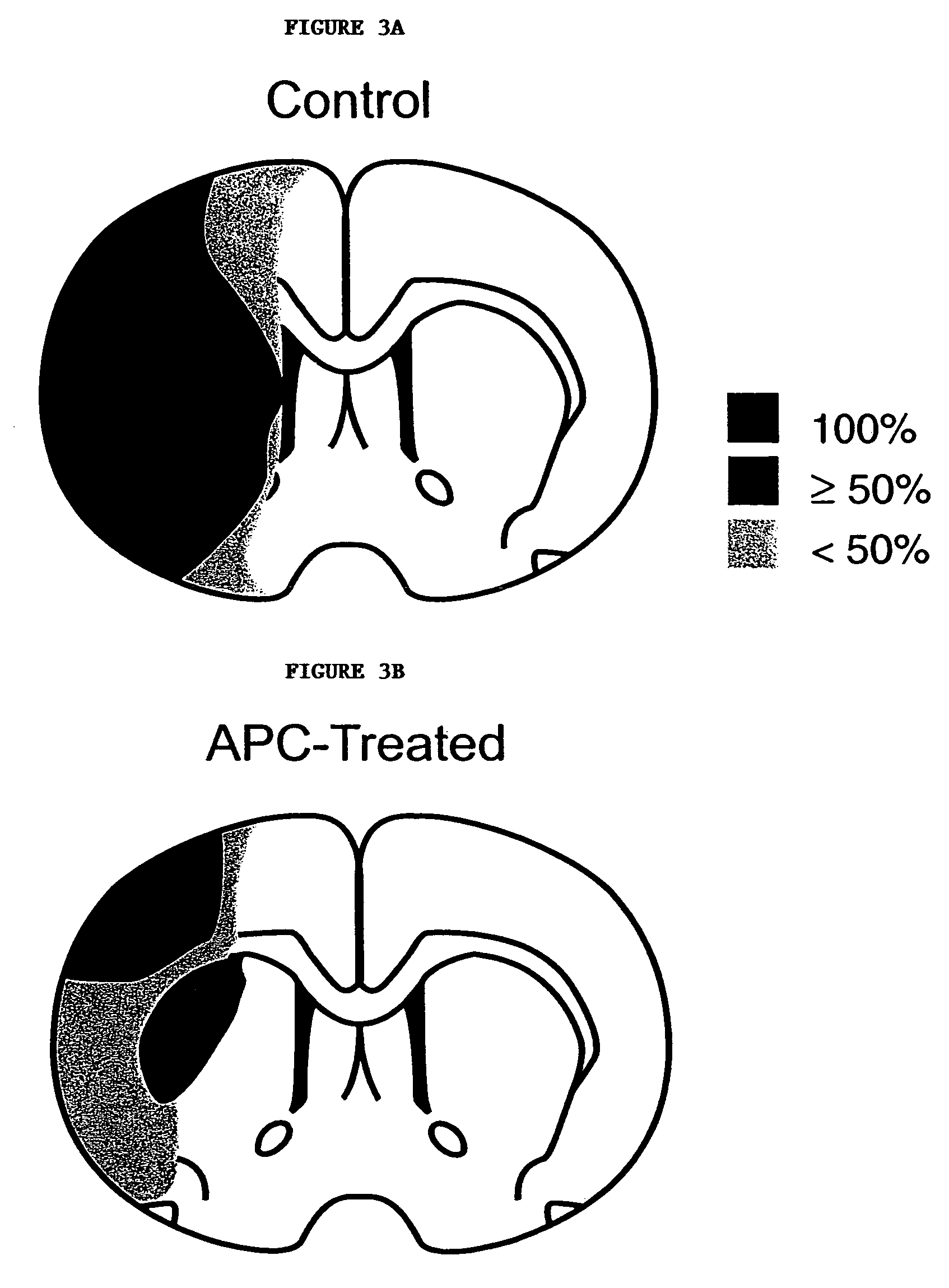Neuroprotective, antithrombotic and anti-inflammatory uses of activated protein C (APC)
- Summary
- Abstract
- Description
- Claims
- Application Information
AI Technical Summary
Benefits of technology
Problems solved by technology
Method used
Image
Examples
example 1
Animals
[0081]Studies were performed in male C57BL / 6 mice weighing 23–26 g using procedures approved by the Institutional Animal Care and Use Committee. Mice were subjected to a modified middle cerebral artery (MCA) occlusion technique (E. S. Connolly et al., Neurosurgery. 38(3):523–531 (1996); H. Hara et al, J. Cereb. Blood Flow Metab. 16:605–611, (1996); and P. Tabrizi et al., Arterioscler. Thromb. Vasc. Biol. 19:2801–2806 (1999)) to induce acute focal ischemic stroke with cerebrovascular thrombosis, as described below. Mice were initially anesthetized with metofane and maintained with 50 mg / kg i.p. pentobarbital. Atropine methyl nitrate (0.18 mg / kg i.p.) was given as pre-medication to prevent airway obstruction by mucus formation. Animals were allowed to breath spontaneously. Rectal temperature was maintained at 37±1° C. by a thermostatically regulated heating pad. The right femoral artery was cannulated with a PE-10 catheter for continuous monitoring of blood pressure and blood a...
example 2
[0102]The effects of administration of APC post occlusion was studied in a separate set of experiments using the methods and materials described above in Example 1 above, except that APC (2 mg / kg) was administered to mice 10 min after the MCA occlusion. infarction volume was reduced by 69% (p<0.03) (FIG. 6A) and edema volume was reduced by 61% (p<0.05) (FIG. 6B), cerebral blood flow was restored towards control values (FIG. 6C), and brain accumulation of neutrophils was eliminated (FIG. 6D). In addition, the decrease in the number of fibrin positive vessels in the ischemic hemisphere was 25%, an insignificant amount in comparison to vehicle-treated controls (FIG. 6E). Thus, APC reduced volumes of brain infarction and edema in a dose-dependent fashion (FIGS. 6A and B) and produced a dose-dependent restoration in CBF during reperfusion (FIG. 6C).
[0103]In this post-occlusion administration model, immunostaining for ICAM-1 in the ischemic hemisphere indicated that APC administration aft...
example 3
[0108]The effects of administration of protein S, a non-enzymatic cofactor of APC, was studied in a separate set of experiments using the methods and materials described above in Example 1. Either vehicle, protein S (2 mg / kg) alone or protein S (2 mg / kg) co-injected with a low dose of APC (0.1 mg / kg) was injected 10 minutes after the MCA occlusion. The results shown in FIGS. 8A and 8B indicate that the low dose of APC alone was not protective. However, co-injection of protein S (2 mg / kg) and APC (0.1 mg / kg) produced a synergistic effect, significantly reducing brain infarction and edema by 71% (p<0.008) and 51% (p<0.05), respectively, in the focal brain ischemia model.
PUM
| Property | Measurement | Unit |
|---|---|---|
| Time | aaaaa | aaaaa |
| Dimensionless property | aaaaa | aaaaa |
Abstract
Description
Claims
Application Information
 Login to View More
Login to View More - R&D
- Intellectual Property
- Life Sciences
- Materials
- Tech Scout
- Unparalleled Data Quality
- Higher Quality Content
- 60% Fewer Hallucinations
Browse by: Latest US Patents, China's latest patents, Technical Efficacy Thesaurus, Application Domain, Technology Topic, Popular Technical Reports.
© 2025 PatSnap. All rights reserved.Legal|Privacy policy|Modern Slavery Act Transparency Statement|Sitemap|About US| Contact US: help@patsnap.com



